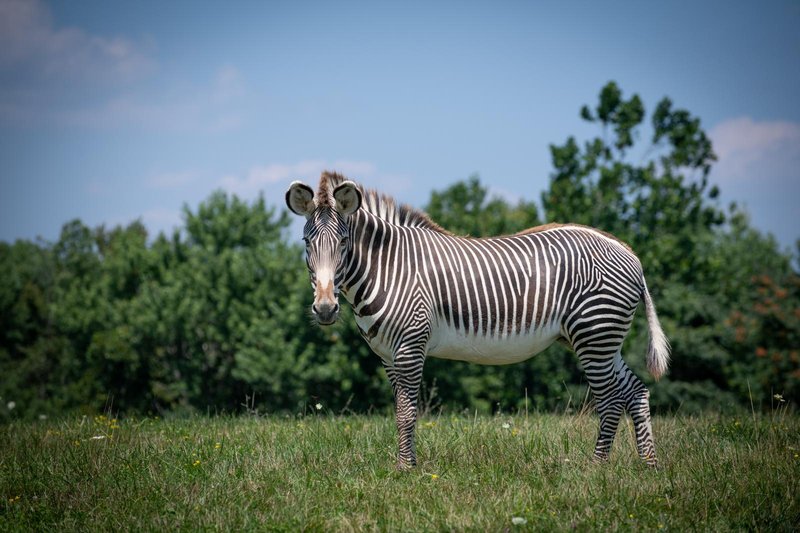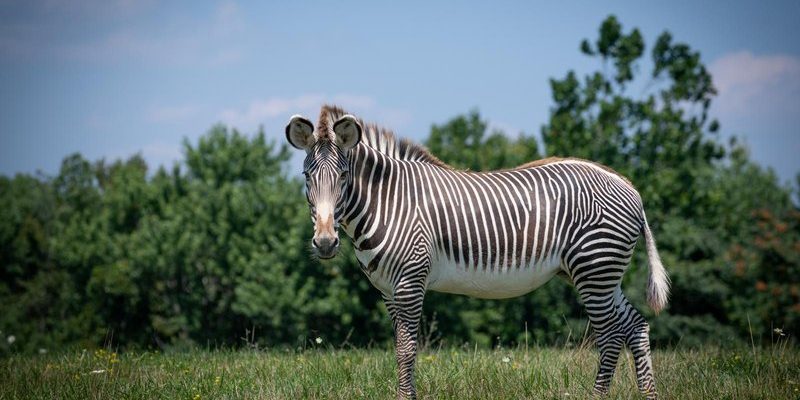
So, how did this remarkable creature come to be? To understand the **evolutionary history of the Grevy’s zebra**, we need to dive into both its genetics and the environmental challenges it faced. This journey is like flipping through an ancient book, where each chapter reveals unique traits that helped the Grevy’s zebra adapt to its surroundings in eastern Africa. Let’s explore how this zebra became a symbol of survival and resilience.
What is the Grevy’s Zebra?
The Grevy’s zebra, named after French naturalist Jules Grévy, is the largest of all zebra species. With its long legs and narrow stripes, it looks quite different from its relatives. While the common zebra has wider stripes and a more compact body, the Grevy’s zebra boasts a unique coat pattern that not only gives it distinction but also serves practical purposes.
You might be wondering why these stripes are so important. The bold patterns help confuse predators in the wild, a clever trick visually similar to how the stripes of a barcode can keep track of items in a store. Interestingly, each Grevy’s zebra has a distinct stripe pattern, much like human fingerprints. This individuality plays a crucial role in their social interactions.
Grevy’s zebras mainly inhabit **grasslands**, **savannas**, and areas near water sources in countries like Kenya and Ethiopia. Their preference for arid regions showcases their remarkable ability to adapt to environments that challenge many other species.
Origins and Ancestry
The Grevy’s zebra shares a common ancestor with other zebras, but its lineage tells a different story. Recent genetic research suggests that the Grevy’s zebra diverged from the other zebra species around 2 million years ago. This separation means that, while they share some traits with common zebras, they have also developed unique adaptations necessary for survival in their particular habitats.
Here’s the thing: this lengthy separation in evolution led to some fascinating differences. Grevy’s zebras are more closely related to horses than to their zebra cousins, which might explain some of their distinctive traits, such as their larger ears and straighter backs. Unlike their relatives, who live in social groups, Grevy’s zebras tend to be more solitary or form loose associations. This behavior can be attributed to the variable food sources in their habitats, which makes it easier to navigate in smaller groups.
Over time, their adaptations have allowed them to thrive in harsh environments where water and food can be scarce. These evolutionary improvements demonstrate how species can change over millennia to cope with their surroundings.
Physical Characteristics and Adaptations
One of the most striking features of the Grevy’s zebra is its coat. The **narrow stripes** are not just for show; they serve several purposes. As previously mentioned, the unique patterns can confuse predators by creating an optical illusion in the wild. Moreover, the stripes help regulate their body temperature, reflecting sunlight and providing a cooling effect.
Grevy’s zebras are well-equipped to survive in the hot semi-arid regions of East Africa. They have longer legs, which help them traverse rocky terrains and escape from threats quickly. Their bodies are built for endurance rather than speed, allowing them to travel long distances in search of food and water.
Additionally, these zebras are known for their keen sense of smell and hearing. This heightened awareness plays a vital role in their survival by alerting them to predators well before they come into sight. Think of it as a built-in alarm system that helps them stay one step ahead in the wild.
Social Behavior and Reproduction
Unlike some zebra species that form tight-knit herds, Grevy’s zebras are more individualistic. They often form loose groups, primarily mothers and their foals, rather than large family units. This behavior might seem odd, but it’s a survival strategy. In environments where resources are limited, spreading out helps minimize competition for food and water.
When it comes to reproduction, Grevy’s zebras have a fascinating courtship ritual. Males will often perform a series of vocalizations and physical displays to attract females. This display is a way to showcase their strength and suitability as mates. After a successful courtship, a single foal is born, and the mother will nurse it for about a year. Offspring learn critical survival skills during this time, gaining knowledge from their mothers about where to find food and how to avoid danger.
Interestingly, Grevy’s zebras have fewer young than other zebra species. This low reproductive rate is one reason why they’re classified as endangered. Human activities, habitat loss, and competition for resources with livestock have all taken a toll on their population.
Conservation Status and Threats
The Grevy’s zebra is currently listed as endangered, with estimates suggesting there are fewer than **2,500** individuals remaining in the wild. This decline is alarming, considering that these majestic creatures once roamed in much larger numbers across eastern Africa.
So, what’s happening? A combination of habitat loss due to agriculture and urbanization, along with poaching and competition for water with livestock, are the primary threats. Imagine trying to live in a shrinking house while your neighbors keep expanding theirs; that’s the reality for the Grevy’s zebra.
Conservation efforts are underway to protect these zebras and their habitats. Programs focus on creating wildlife corridors, protecting their grazing areas, and raising awareness in local communities. With increased efforts, there’s hope that the Grevy’s zebra will not only survive but thrive in the years to come.
Why Understanding Their Evolution Matters
Understanding the evolutionary history of the Grevy’s zebra is crucial for several reasons. First, it helps scientists comprehend how species adapt to their environments over time. By studying the Grevy’s zebra’s unique adaptations, researchers can learn more about the evolutionary process itself.
Secondly, knowing their history can inform conservation strategies. By understanding the specific challenges these zebras face, conservationists can create more effective measures to protect them. If we can grasp what makes the Grevy’s zebra unique, we can better appreciate the delicate balance of ecosystems and the importance of preserving biodiversity.
Finally, it’s a reminder of the interconnectedness of all species. Each creature has its place in the tapestry of life, and protecting one thread—like the Grevy’s zebra—can help maintain the integrity of the whole.
The **evolutionary history of the Grevy’s zebra** is a captivating journey of adaptation, survival, and resilience. With its unique physical traits and social behaviors, it stands out as a remarkable example of how species evolve to thrive in ever-changing environments. As we continue to learn more about this incredible zebra, let’s remember the importance of conservation efforts and the responsibility we have to protect such unique creatures.
Honestly, it’s vital for us to appreciate the wonders of the natural world, including the Grevy’s zebra. By sharing their story, we not only celebrate their continued existence but also inspire others to value and protect the diverse life that enriches our planet.

